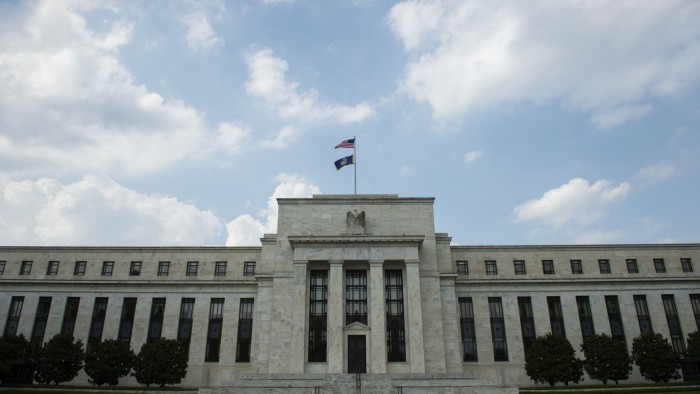Investors pour money into US corporate bond funds at record rate

Roula Khalaf, Editor of the FT, selects her favourite stories in this weekly newsletter.
A record amount of money has flooded into US corporate bond markets this year, as investors rush to lock in the highest yields in years ahead of an anticipated series of interest rate cuts by the Federal Reserve.
Inflows into corporate bond funds have reached $22.8bn so far in 2024, according to fund tracker EPFR, the first positive start to a year since 2019, when $22.4bn had flowed in by this point.
The flows have helped to push up prices and compress so-called spreads — the extra interest paid by corporate borrowers relative to the US Treasury — to their lowest point in two years.
Most of the money has gone into investment grade vehicles, pushing spreads to two-year lows, although some has gone into junk debt, where spreads are at 26-month lows and just a whisker above levels last seen before the global financial crisis in 2007.
However, despite spreads being at such low levels, some investors remain concerned about the health of the world’s biggest economy and the potential for deepening corporate distress or a rise in defaults — particularly if the Fed does not deliver the interest rate cuts the market is expecting.
“There is a risk that this dynamic is overheating,” said Christian Hantel, portfolio manager at Vontobel, and is “so strong that some investors might just want to get to the market no matter what the price is.”
This could mean that “the risk premium of certain credits is not adequately priced anymore,” he added.

The Fed on Wednesday kept interest rates unchanged at their 22-year high of 5.25 to 5.5 per cent, and repeated earlier projections of three quarter percentage point cuts this year. Nevertheless, recent data showing persistent price pressures has made some investors nervous about the central bank’s ability to pull off a so-called soft economic landing, where it brings down inflation without causing a recession.
“There’s a risk that we don’t thread this needle and unemployment picks up speed,” said Adam Abbas, head of fixed income at Harris Associates. “I think there are risks to credit spreads here.”
A volatile market backdrop over the past two years encouraged investors to keep money on the sidelines or even pull out of bond funds, helping drive up borrowing costs and limiting companies’ access to fresh funding.
But the Fed’s so-called “pivot” in December — when the central bank gave its strongest signal yet that it was prepared to begin lowering rates — sparked a dash back into credit funds.

“Investors are shifting to a large extent from less risky products, where they had been hiding for a while,” said Hantel.
Fund managers say the flows have come from a broad range of retail and institutional investors both in the US and abroad, who have been drawn to the chunky yields on offer. Average yields on US investment grade debt, which has attracted roughly four-fifths of the new money, are currently 5.4 per cent, less than their recent 2023 high of 6.4 per cent but still well above the lows seen after the Covid crisis.
“The capital is coming in from every channel, every geography because we have attractive real yields and the biggest, most liquid credit markets,” said John McClain, a portfolio manager at Brandywine Global Investment Management.
Borrowers have also flocked to the market this year. Investment-grade companies alone have issued a record $561bn in dollar-denominated bonds year-to-date, according to data from LSEG, the largest volumes seen since at least 1990. High-yield issuance has also accelerated, rising 64 per cent year-on-year to $62bn — the highest total in three years.
Nevertheless, investor demand has pushed down spreads, with the average investment grade bond spread now at just 0.92 percentage points, according to Ice BofA data, down from 1.04 percentage points in late December and the narrowest point since January 2022. The high yield spread has dropped from 3.39 percentage points to 3.14 percentage points this year, hovering around its tightest levels since January 2022.
The moves demonstrate “how investors are afraid to miss the opportunity to lock in these yields”, said Andrzej Skiba, head of Bluebay US fixed income at RBC GAM.
Investment grade issuers are seen by analysts as unlikely to default, while the quality of issuers in the junk bond market is seen as having improved. Hantel said that he was not overly concerned about spread levels yet, but that it was becoming increasingly evident that some new-issue deals “are definitely coming in too tight”.
The potential for demand to fall off and spreads to widen in the future means that investors “need to do [their] credit analysis properly”, he added, in order “not to be the last one in the queue to sell your bonds”.
Comments